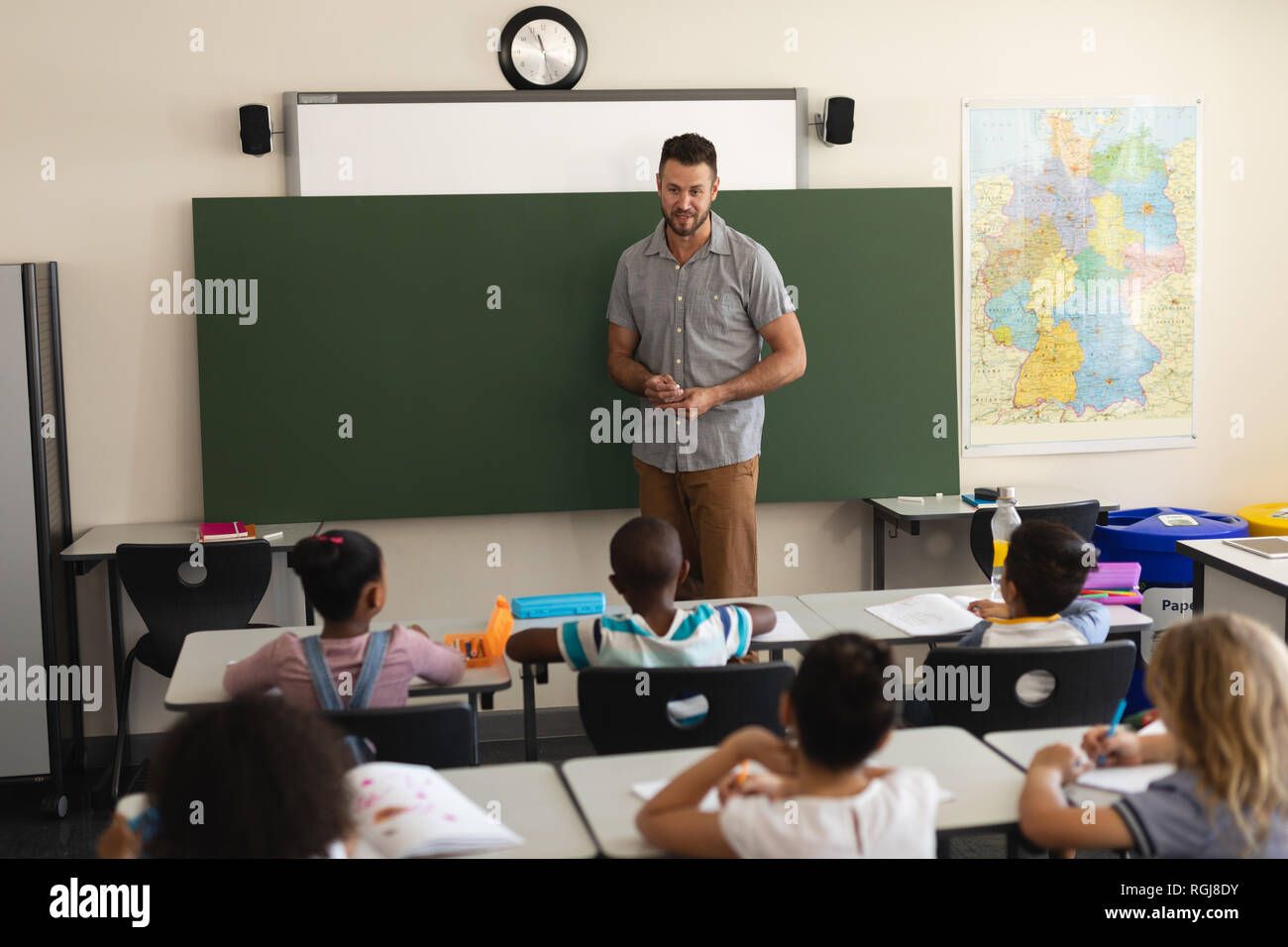Checking Out the Different Teaching Techniques in Key Science Education Today
Inquiry-based understanding, hands-on experiments, and the integration of modern technology are redefining how instructors engage young minds. In addition, joint methods and differentiated instruction are being used to cater to the varied demands of trainees, improving both engagement and understanding.
Inquiry-Based Learning
Inquiry-Based Learning (IBL) is a pedagogical technique that motivates trainees to check out scientific principles with doubting, examination, and hands-on experimentation. This method highlights the duty of pupils as active participants in their learning, promoting essential reasoning and analytical abilities. By involving with real-world inquiries, pupils come to be motivated and curious, which boosts their understanding of scientific concepts.
In IBL, instructors act as facilitators, guiding trainees as they browse their questions rather than delivering info straight. This student-centered approach enables for distinction, fitting numerous finding out paces and styles. Students establish skills in formulating hypotheses, making experiments, and examining data, which are essential for clinical literacy.
In addition, IBL cultivates cooperation among pupils, urging them to share findings and concepts. This cumulative query promotes social skills and a sense of community within the classroom. Moreover, the procedure of inquiry encourages resilience, as students find out to welcome failing as a tipping rock towards understanding.
Hands-On Experiments
Hands-on experiments are a crucial part of effective scientific research education and learning, complementing the principles of inquiry-based knowing. These experiments allow students to engage directly with clinical principles, cultivating a much deeper understanding through experiential learning. By controling products and observing end results, young learners can comprehend abstract theories in concrete methods.
Such activities promote crucial thinking and problem-solving abilities, as trainees hypothesize results, conduct experiments, and analyze outcomes. This process urges them to ask concerns, refine their understanding, and create a scientific attitude. Hands-on experiments can be tailored to diverse learning styles, making certain that all students have the possibility to engage meaningfully with the content.
Additionally, hands-on experiments typically motivate collaboration among peers, promoting team effort and communication abilities. Operating in teams makes it possible for trainees to share concepts, discuss findings, and pick up from one another, which improves their total instructional experience.
Including hands-on experiments right into the main scientific research educational program not just improves the finding out environment but also cultivates a lifelong rate of interest in science. By actively getting involved in their education and learning, students are much more likely to develop an enthusiasm for clinical query that prolongs past the class.

Technology Combination
Integrating technology into primary science education has ended up being progressively crucial in cultivating pupil engagement and enhancing finding out end results. Making use of electronic devices, such as interactive simulations, online labs, and academic software, offers pupils with chances to check out scientific ideas in cutting-edge means. These resources facilitate a much deeper understanding of complex subjects by permitting learners to picture and control variables that would be unwise in a typical classroom setting.
Furthermore, technology integration encourages customized finding out experiences. Trainees can proceed at their very own rate, taking another look at challenging ideas with multimedia sources, which deal with different discovering styles. This flexibility not just sustains specific development but additionally grows a sense of freedom in students.
Additionally, technology serves as a bridge to real-world science, linking pupils with current study and expert contributions. Access to clinical journals and on the internet data sources widens pupils' perspectives on clinical query and fosters vital believing skills.
Collaborative Knowing
Joint knowing plays an important duty in primary science education by fostering synergy and communication skills among trainees. This technique urges learners to work together, share expertise, and take part in analytical, which enhances their understanding of scientific concepts. By taking part in team activities, trainees learn to articulate their concepts, listen to varied viewpoints, and bargain options, every one of which are necessary abilities in both real-world and scholastic contexts.

Research shows that collective knowing can lead to enhanced inspiration and important link engagement in science topics, as pupils locate satisfaction in shared experiences (primary science tuition Singapore). In addition, this approach prepares students for future collective ventures, outfitting them with the abilities needed for reliable team effort in higher education and professional environments. Ultimately, welcoming collaborative learning in primary scientific research education can substantially improve the discovering experience and promote a much deeper understanding of scientific query
Separated Instruction

Set apart instruction can show up in numerous means, such as varying the material, processes, or items of understanding. For example, teachers may use tiered tasks that provide differing levels of complexity, permitting pupils to work at their respective readiness degrees. Furthermore, flexible organizing approaches can assist in partnership amongst trainees with different abilities, cultivating peer understanding.
Analysis plays a vital role in this method, as it notifies instruction and assists instructors recognize each trainee's one-of-a-kind requirements. Formative assessments, such as quizzes and observations, can assist instructors in changing their strategies to enhance learning end results. primary science tuition Singapore. Inevitably, by applying set apart guideline in main science education and learning, teachers can cultivate an extra reliable and equitable understanding atmosphere, equipping all students to find out reach their complete potential in recognizing clinical phenomena
Final Thought
In recap, the varied teaching methods in key science education, including inquiry-based understanding, hands-on experiments, technology combination, collective understanding, and differentiated direction, jointly add to an extra effective knowing atmosphere. These approaches promote essential thinking, analytic abilities, and a much deeper comprehension of scientific concepts. By applying these methods, educators can create helpful and interesting class that deal with the diverse needs of students, eventually fostering a lifelong passion in scientific research and enhancing scholastic success.
Inquiry-Based Learning (IBL) is an instructional strategy that encourages trainees to check out scientific ideas through questioning, examination, and hands-on trial and error.Collective discovering plays an important function in main science education by fostering synergy and interaction skills among pupils.Research shows that joint knowing can lead to boosted inspiration and involvement in scientific research topics, as pupils locate satisfaction in shared experiences.In cultivating a comprehensive discovering environment, differentiated direction emerges as an essential strategy to suit the diverse needs and abilities of trainees in primary scientific research education. Eventually, by implementing set apart direction in key science education and learning, educators can cultivate a much more reliable and equitable learning setting, empowering all trainees to reach their complete Click This Link potential in comprehending scientific sensations.
Comments on “Primary Science Tuition Singapore for Building Confidence in Science”